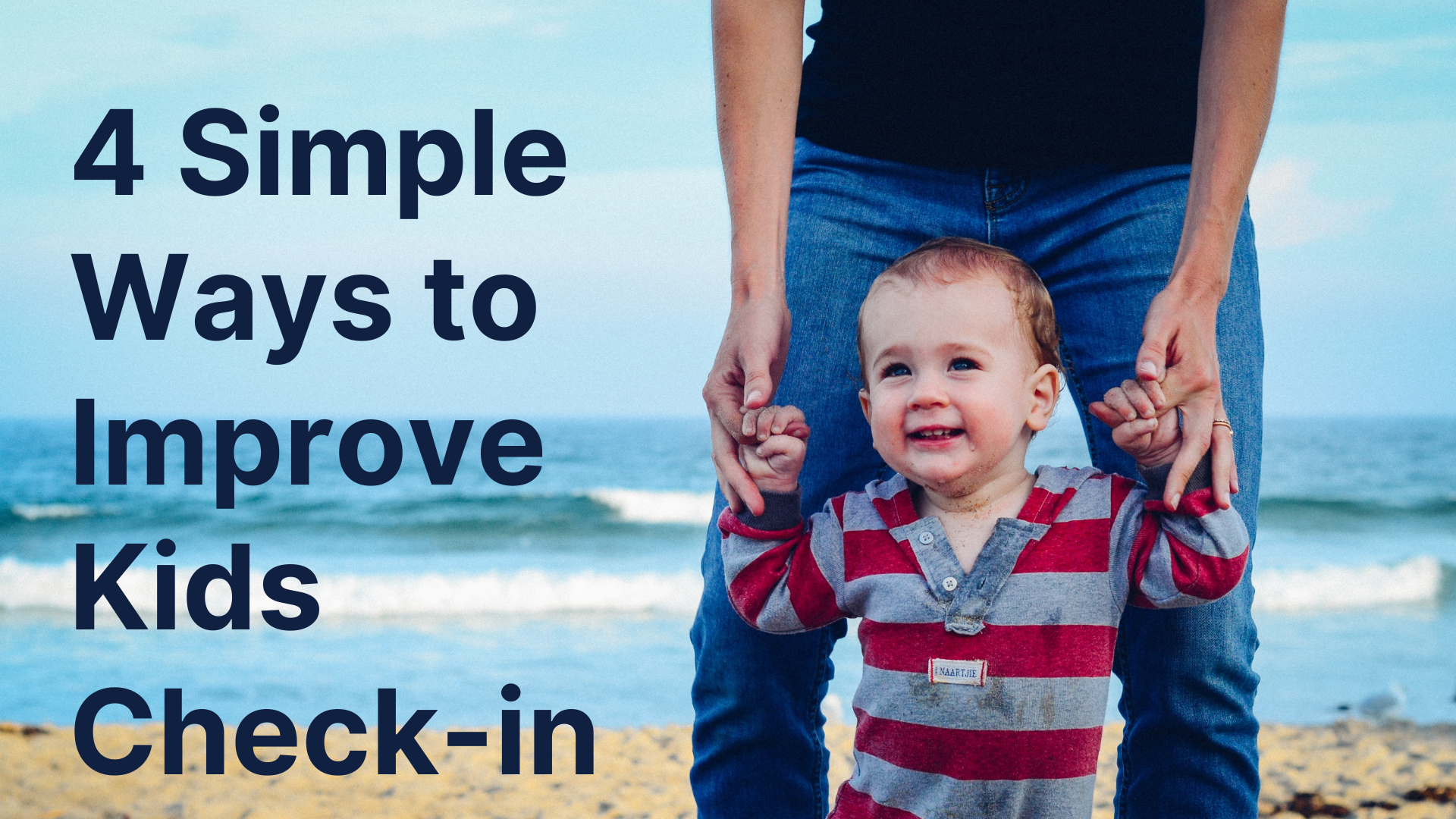4 Simple Ways to Improve Kids Check-in
Photo by David Straight on Unsplash
When guests first come to your church, they are going to make the decision of whether or not they’re going to come back in the first 15 minutes of being on your campus. Since those first few minutes are so crucial, you need to be more intentional with those first few minutes than any other.
I talk extensively about what guests are looking for in this post, but for today, we’re going to drill down on one part of the guest experience that can make or break you.
Kids check-in.
It may be in the circles I run in, but a frequent target market for churches are young families. And getting young families implies they have children. Part of that first 15 minutes is going to be interacting with your check-in team and procedures. It doesn’t take a lot of money and you don’t need a whole technological overhaul to make it great. (Although both of those help)
I’ll admit I wasn’t always the best at this. At my first church, I barely had a sign in sheet, security tags were non-existent, and my check-in station looked like an afterthought. Thankfully, over the years I’ve learned how to make it better, even on a small budget. I’m greatly indebted to Church of the Highlands in Birmingham, Alabama, and their Grow Leader network. Many of the resources I will share in this post come directly from them.
If you’d like my guest experience kit that contains all the resources I talk about in this post, you can download it here.
1. Happy and Helpful Personnel
It doesn’t matter how good your systems and technology are, if you don’t have people who naturally smile, like people, and generally want to create a great experience, your check-in process will be dead in the water.
Often the check-in person is the first person new families will interact with, so you want to give a good impression. A lot of times we’ll put administrative people in these roles because they can follow specific processes and handle the technology. I do it all the time. But if that person is a grump, then maybe the tech booth might be a better place for them.
The person you put in the check-in position needs to know the process for checking in a new family, how to fix common problems, and how to direct the kids and the adults to their next step with a smile.
Often, I’d have more than one volunteer at check-in. One person was focused on putting the information in the computer and printing the tags, while the other, usually a warmer and bubblier person, handled walking the new parents through the process, asking, and answering questions, and making sure everyone gets to where they need to be, including walking the parents to the Main Auditorium.
Even if your technology has a catastrophic failure, and you’re resorting to hand-written tags, how your volunteer handles these problems speaks volumes to the new guests. One thing I did that helped new and old volunteers was a step-by-step guide on how to use the check-in system with screen shots and everything. In the back of the guide, I had common problems listed with their solutions. Things like, the printer needs new paper, it’s jammed, or the tag didn’t print. It wasn’t unusual for me to see that binder opened on the desk as they did their job.
The guide empowered the volunteers to solve their own problems and helped them train their own people, creating happy and helpful volunteers which resulted in happy guests.
2. Easy Check-in
In kids’ ministry, we need to collect a lot of information. While some are advocating the adult connect card be shrunk down to a name and an email, that won’t cut it for kids. Ours may be getting longer. We need to know allergy information, food preferences, special needs accommodations, and photo releases. On top of that, we’d like to have phone numbers, addresses, birthdays and more just so we can care for them.
It can be a lot.
What you don’t want to do is ask the parents for so much information that they think they’re in a doctor’s office applying to be a new patient. If you’ve ever done that, you know how much of a chore it can be. On my card, I try to consolidate as much information as possible and only ask the most important questions.
In addition, I don’t wait for the parent to finish filling out the card before I start putting them into our system. Most check-in systems need very basic information to get started, like the name and birthday of the kid and the parent. You can put in the rest of the information later, even during the week. A lot of times, I’ll have all the tags printed and ready to go by the time the parent finishes filling out my card and we can do a simple exchange of paper.
Nursery and preschool frequently need more information than just demographics and allergies. I put that info on the back of the card and point it out to the parents. Parents of preschoolers are the most concerned about the safety and well-being of their children, so you want to ask about changing diapers, bottles, and snacks. You don’t want to give a child something the parent didn’t authorize. That’s a recipe for disaster.
It's not unusual for a parent to skip fields on their card. They’ll skip them because they don’t want to share, don’t know, or are tired of filling out the card. It’s ok. Just make sure you get the most important information to you, and no, it’s not all of it.
I see this a lot when a kid brings their friends. A lot of times, these kids don’t know where they live and barely know their parent’s phone numbers. One time I had a kid struggle to tell me their parent’s first name. Just do the best you can and mark the adult who brought them as the emergency contact. You can figure the rest out later.
3. Welcome Letter
If you have the first two points for check-in, you’re pretty much set. However, if you want to take the guest experience to the next level, there are some things you can give parents that will give them extra peace of mind.
After parents fill out the card, I give them a welcome letter. It’s a three-page document that explains what their kids will learn and experience while they’re in my area. It covers nursery, preschool, and elementary, our mission and vision, service flow, typical snacks, and how they stay connected with us beyond Sunday morning.
I know that sounds obnoxiously long, and when I first saw it, I thought so too. However, when I was between churches and visited Church of the Highlands, they gave me one of these letters. As I sat in the auditorium waiting for the service to begin, instead of staring at my phone, I opened the bright blue envelope and read THE WHOLE THING.
Granted a little bit of it was professional curiosity, but I wanted to know what my son was going to experience while he was in service. It gave me tools to ask him questions about the service and gave my wife peace of mind. We worshipped freely knowing that our son was doing the same in his service.
What more can we ask for first-time guests?
4. Give a gift
In addition to the welcome letter, there was a small book titled Praying Circles Around Your Children by Mark Batterson slid in the envelope. As a long-time fan of Batterson, and huge fan of his book The Circle Maker, this was a great gift.
It was so much better than a mug or pen or a fresh loaf of bread. (Yes, some churches do that.) It met a need and concern for me as a parent and it was so small, I could easily put it into my pocket. Some guests love to be called out, others not so much. You don’t want to make it hard for them to hide in the crowd. (I’m looking at you, bread people.)
I took these two ideas and put them in my own ministry. After the parents got their security tags and dropped off their kids, we’d give them a blue envelope with the welcome letter and the book. We’d say, “here’s a little more information about us and gift for you.” The common response we got from parents was, “oh! Thank you!” It was unexpected and welcome. I saw more parents come back happy as a result of giving these out than almost anything else.
We all want to reach more people, but we need to be happy, welcoming, and prepared when they do show up. It’s far too easy to become insider focused and give all your time and attention to the kids that come every week. Be intentional with your plans and you’ll see them come back again and again.
God will only send you the people you’re ready to care for. Having a great guest experience is a great first step.
If you’d like to see some of the resources I’ve talked about in this post, I’ve put together a guest experience kit just for you. It includes the check-in procedures, guest card, and welcome letter. Click here to download. I hope it helps!
This kit gives you a kids registration card, check-in procedures, and a guest letter for parents. All of the documents use word except the registration card, which uses Photoshop.








One of the biggest questions parents ask when they drop off their little one is “will my kids be safe?” We don’t like to talk about all the bad things that can happen to our kids. But spending just a few minutes watching the news or scrolling through social media can make you scared of your own shadow.
As a result, we in kidmin, have to keep our kids safe and project that safety to our current parents and guests. One of the best ways to do this is to provide check-in for your kids.